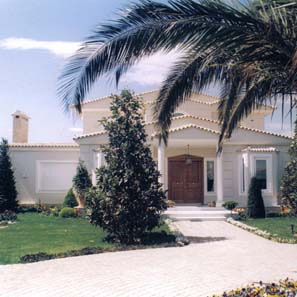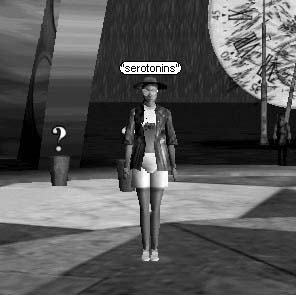

The Virtual etymologically, as the sociologist Bruno Latour refers to, is what was many properties and characteristics and waits to take shape. The Virtual does not only depict reality, but it uses it as raw material. The concept of virtual was always existed in the boundaries of reality.
Supervisor: Papakonstantinou Giorgos
Reference Number: 87


This paper aims to present concrete through an experimental approach and argues about its creative use.
Its basic qualities and principles are touched by different ways,3 of which have been developed by architects and 2 by sculptors.
Concrete is investigated through its position in the Modern movement, its appeal to the senses, its new form and five concrete objects, which constitute the five pieces of its puzzle.
All though it is such a strong material in compression, its basic elements are simple, natural, raw materials: sand, crussed brick, cement, water and it can be made to the following recipe:
3 tea cups of sand and pebbles,2 tea cups of cement and one tea cup of water.
As simple, as a cooking recipe, this exemplifies its unique existence.
The objective is to compare the different ways concrete is used.
Architects use concrete to blow life into their designs.
Paradoxically they fully exploit its extensive sculptural qualities, its originality in shapes and texture.
They experience with its visual performance, enrich it with new incredible qualities by mixing it with optical fibers and chemical compounds.
Sculptures, on the other hand, use it as a working material all though it is not wildly considered one of their principle materials.
They also experiment with concrete by putting aside its plastic qualities and focusing on its structure and strength.
Through experiment, an amusing conclusion was reached.
All though it was expected that sculptures create shapes their experiments showed quite the opposite.
Different thoughts and considerations derive from this contradiction, noticed in the different types of art that exploit concrete.
During this experiment I was induced to acquire my own personal experience and form my own opinion, to get involved into a physical process and built my own forms, in which I have replaced one of the ingredients with some unrelated material.
Observation was the objective. The outcome is a photographic representation of all the changes in quality, texture, visual stimuli and showed that concrete exhibits as a creative material.
Supervisor: Kotionis Zissis
Reference Number: 92
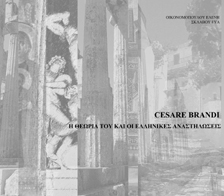

The need for the protection,recording and study of monuments is gradually developed in the 19th century as material documents of the past. In dealing with monuments, either the stylistic restoration or anti-restoration movement are developed, two extreme positions, with more tranquil tendencies which appear especially by the end of the century. In the 20th century the need for the protection of monuments matures and the restorations pass from the experimental to a scientific stage. Scientific research is systematically used to the restoration projects, where historical and aesthetic value is recognized. At the same time, the meaning of the monument is expanded to include works of art of later historic periods, together with their surrounding space, as well as whole sites.
Having deep knowledge of the theories of the past and those of his period, Cesare Brandi formulated his theory of conservation, the first completely developed theory in the area. He dealt with meanings such as material and the potential unity of a work of art, lacuna, patina, ruins, time and space and their relevance to the conservation and the way the last takes into account the historical and artistic value. He also introduced preventive restoration. In his theory he formulated two axioms that determine the character of the restorations. According to these axioms, only the material of the work of art should be maintained and the restoration should aim at its potential unity. In general, a critical approach is necessary to define what should be preserved or removed and the way lacunae is completed in order to avoid a historical or artistic falsification. The role of the context of a monument is emphasized, whose preservation is just as essential. The principals of conservation referred to works of art apply to architecture as well, where the relation between monument and context is more crucial.
Brandi’s theory, though heavily criticized, was widely and internationally adopted, and provided the foundations for the Venice Charter, which is still in force. The Greek participation at the congress for the Venice Charter and mainly the studies of Greek architects abroad and especially at ICR, where Brandi was director for many years, contributed to the diffusion of his theory in Greece, where restoration was till then dominated by empiricism and stylistic approach. Nevertheless, the scientific approach in conservation was guaranteed only after 1975, when the Venice Charter was officially adopted and started gradually to be applied.
Supervisor: Theologidou Cleopatra
Reference Number: 72
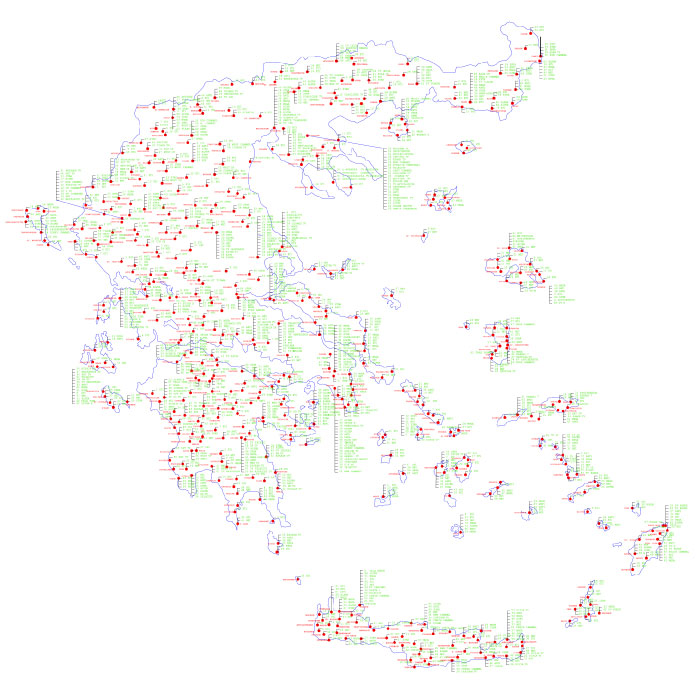

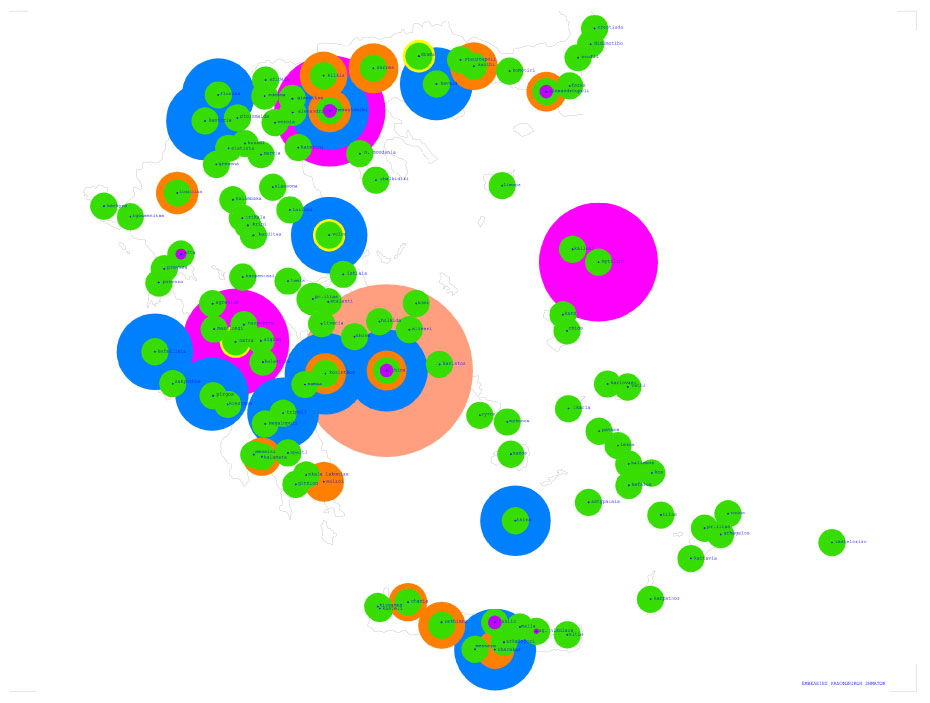

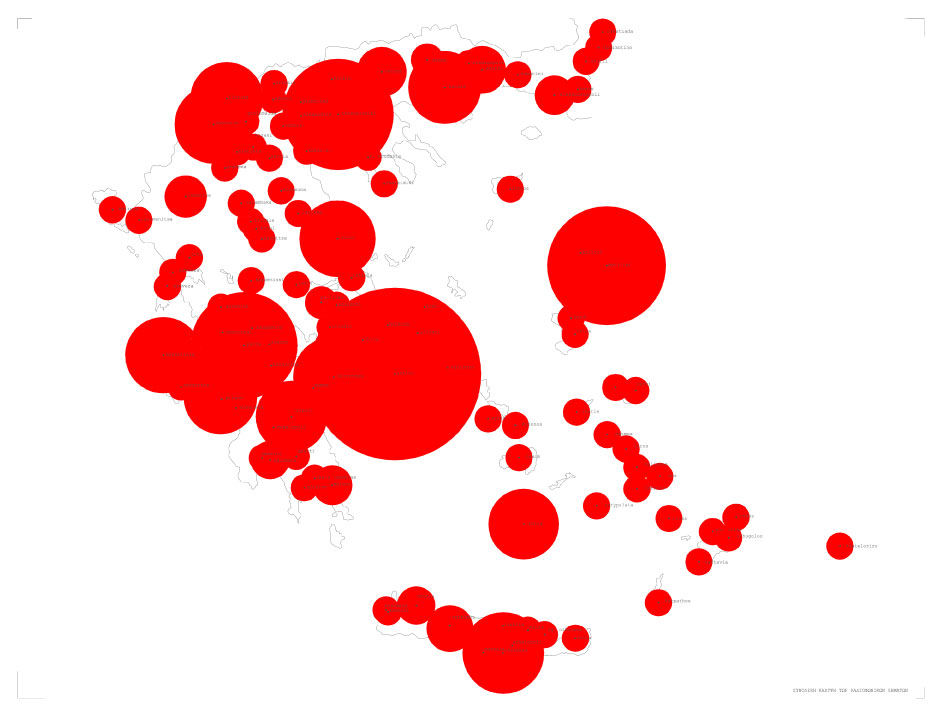

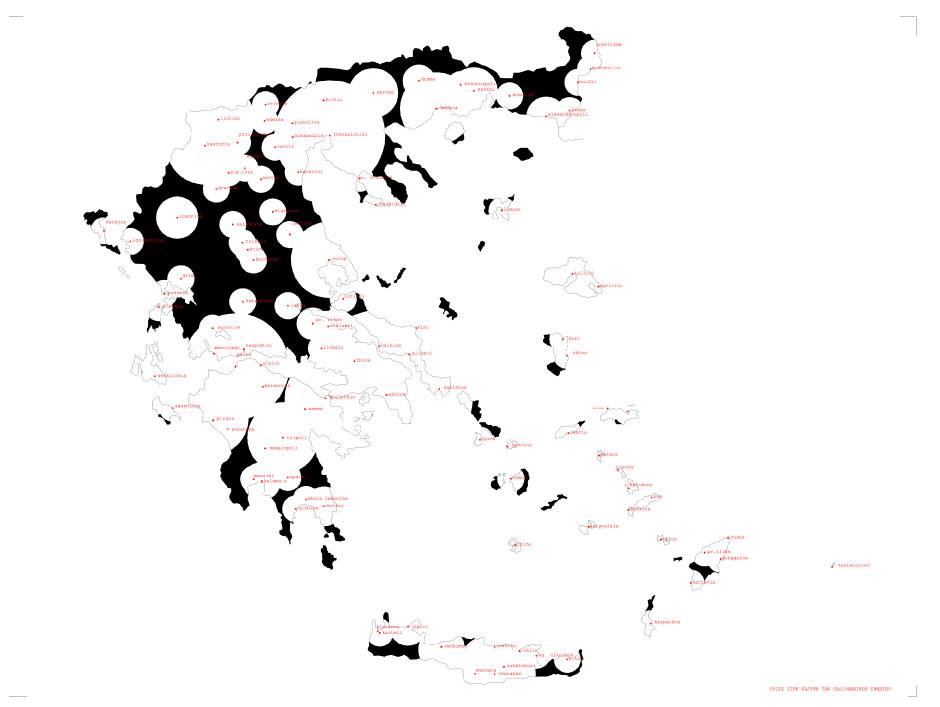

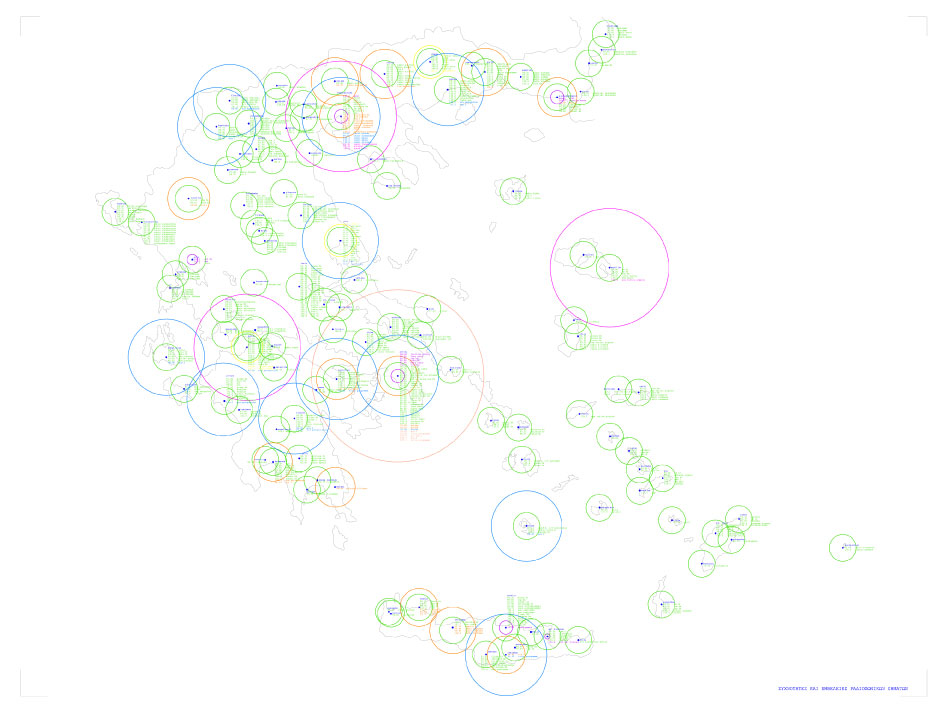

The landscape of earth is covered by another one. A digital, invisible one created by flow of data. Network substructures exchange digital information. These networks support media that we use and they translate for us any kind of data in order us to be able to use it.
This landscape, for witch the term mediascape is used, is examined according to what G. Simmel thinks of the term landscape and also according to how M. Heidegger talks about the term “place”.
Use and flow of data at the networks transform earth to a space of flows. Information flows change the idea of identity, place and time.
Networks tend to be endless and total and tend to cover any part of land. The idea of a network - gap seems to be interesting and is examined.
Using wireless network substructures the idea of a network - parasite that creates gaps in the networks is formed. There are various possibilities about the effects of this parasite to the space of flows and about its identity.
Supervisor: Tzirtzilakis Yorgos
File: Arvanitis_RDTmediascape_en_.pdf
Reference Number: 61
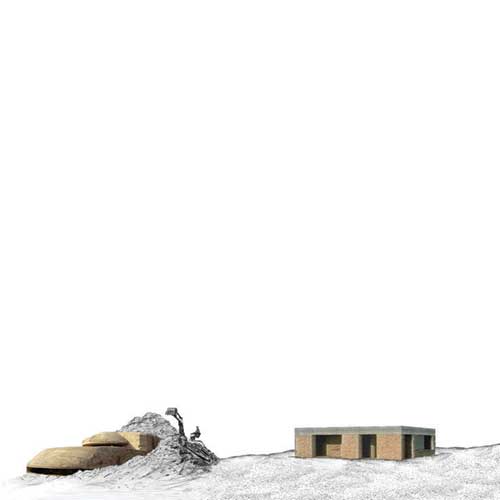

The surface of Greek ground is previously lifted off in order to create mountainous volumes and in the same time is sunk in ravines and steep slopes, in order to emerge once again through water, shaping islands. This fall back of ground lends different qualities in the space and arises architectural actions.
The particular treatise is dealing with the emertion and the immersion of the earth’s rind, related with two architectural projects. A summer house created by Aris Konstantinidis and the martial shelters - bunkers. The art of architecture is being presented as a "container of life" and as a mean of service, through forms that disappear in the landscape and are located in the island of Aegina.
The building of Konstantinidis is lifted off and comes out from the ground using its materials. The shelters extract departments of ground in order to return and be placed in the cavities that they created. Above the ground and under the sky, the human being tries to create constructions that will receive residences. In the first case the surface of the earth is presented as mean of emertion and in the second as camouflage. The house declares its presence in the landscape and the bunker treats it as a cover.
The above observations on the relation of landscape, architecture and person are based mainly on the philosophy of Martin Heidegger.
Supervisor: Kotionis Zissis
File: 43_Dimopoulou_Gika_text.pdf
Reference Number: 43
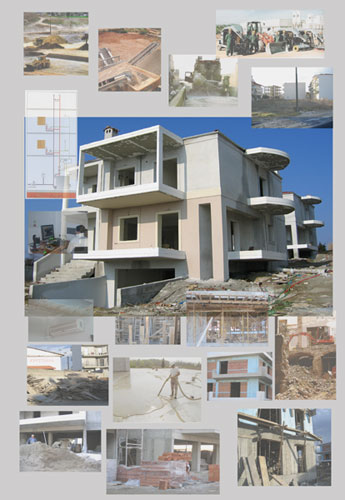

Designers, architects and all who are evolved in building constructions worldwide, are focused on an effort to reduce the environmental impact of building constructions. Although, many designers or architects pretend that their projects are sustainable, if there is not conducted an objective analysis, it is not possible to estimate the environmental impact that a construction has. The total energy use during the life cycle of a building is a new field of research. A significant amount of energy is spent during the production processes and transportation of building materials. Energy saving is also significant for the reduce of CO2 emissions to the atmosphere that causes the greenhouse phenomenon. Nowadays roughly 50% of total energy consumption is owed in the buildings. Hence exists a imperative need for further reduction in the energy consumption. This fact has caused an intense research in the production processes of building materials, the construction methods, the way of use and their disposal. Recycling and re-use of building elements, wherever it is possible, give a chance of reducing the embodied energy of building materials and of the whole construction.
The aim of the research that follows, is the estimation of the environmental impact of a building construction. For this aim, took place an analysis and calculation of the embodied energy of building materials (necessary energy for the production, the transportation of materials and finally the use of the house model for 50 years. In Greece, there is a gap in this field and the hardly enough analysis that are carried out, are based on global data. Information about terms such as Life Cycle Analysis, Embodied Energy and Energy of Use and about similar researches in other countries are mentioned at the beginning. This research is based on data that was given from greek industries who produce building materials. Also, some design principles have been applied to the model in an effort to reduce the energy needs of the model (energy needs during the use of it, energy expense for its building materials and energy for the maintenance of the construction). There is used a new method for the time estimation of the replacement of building elements of the model.
According to the results of this research, the embodied energy of this building, comes up to the 55% of the whole energy use (building’s life cycle energy) in this house model. With the incorporation of bioclimatic principles during the model’s design, the energy saving is to low. So, as a result, it can be said that if we really want to reduce the energy expense during the construction and the 50 years use of this model, the careful choice of building materials during the construction is essential (materials with low energy need during the production, materials that are produced near the building construction and the most important of all: materials that can be recycled and re-used).
In such an approach of issues as Life Cycle Analysis of building materials and with a method that consumes the energy during the use of a construction, a choice of a building method, technologies and materials can be made and it would be a decision based on a demonstrated energy saving. In this way, the impact and the unenviable consequences on the environment and on public health (as an extension) of building constructions can be really reduced.
Supervisor: Tsangrassoulis Aris
Reference Number: 41
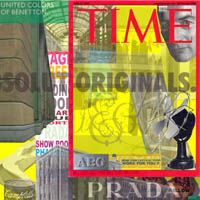

What of the relationship between architecture and market economy, or between architectural practice and the practices of capitalism?
The differentiation on the view according to which the distinction between spiritual and material evolved as an opposition to capitalism, into a distinction between intellect and arts to the characteristics of the capitalistic society, constitutes the main approach of this study.
Although the initial incentives came up from the observation of the phenomenon according to which today’s architects utilize mechanisms that are used in modern marketing, eventually this study extends in a larger framework examining the connection between architecture and the productive mechanisms from the beginning of the century and the early modernism, until today’s reality of the branding.
The starting point of this study is the example of the collaboration between German architect Peter Behrens and AEG (a company of electrical products for which Behrens designed the corporate identity) ,while are being examined the relations that were developed between architecture and the world of business in beginnings of the twentieth century .In addition this study presents the ambitions and the aims of the businessmen ,through this collaboration, which were the increase of sales and production .Architecture’s engagement with the world of mass production led architects to an involvement with the new for that period domain of advertising .
The above collaboration determined deeply the relationship between modern architects and industry’s fundamental supporters ,advertising and media .The influence of advertising and marketing on modern architecture and mainly on architectural practice ,is presented thought the example of Le Corbusier and his engagement with the word of advertising and modern media .As Beatriz Colomina cites the existence of architecture as a representation in the modern media (together with its traditional substance ,that of built space) delimits a new stage for the architectural production. Thought the pages of magazines and publications architecture is consumed from the large public of middle class.
According to this tradition contemporary architects are extremely familiar with the design of advertisements and the production of images ,while they are able to manipulate the media in an era (post industrial),where the model of mass production has been replaced from marketing and brand development. In this new economical environment where the promotion of the products is more important from the products them selves, more and more architectural firms use and at the same time give shape to the new marketing practices, while they design environments that affect the behavior of the consumers, advertisements and branding, exploiting and at the same time affirming the deep relationship that has been developed between architecture and the new economy based on consumption.
The example of the collaboration between Dutch architect Rem Koolhaas and Prada, one of the main representatives of the fashion industry, is the last part of this study, where the market is the main ideology and the architect proposes new consumption formulas thought an architecture that functions as a mechanism for the renewal and the evolution of the brand.
Supervisor: Stylidis Iordanis
Reference Number: 58


